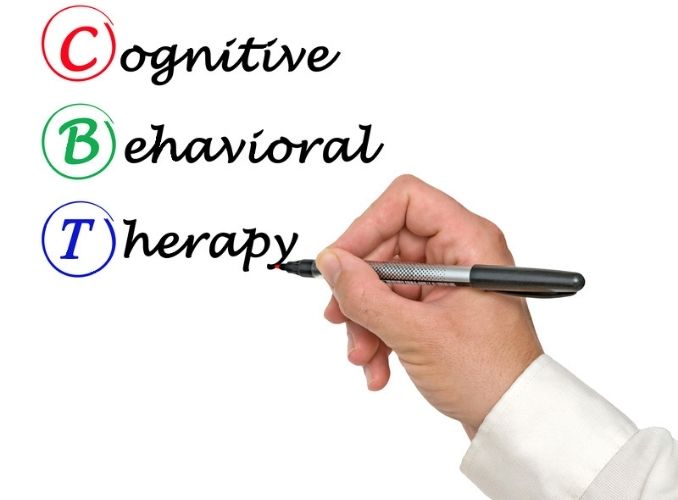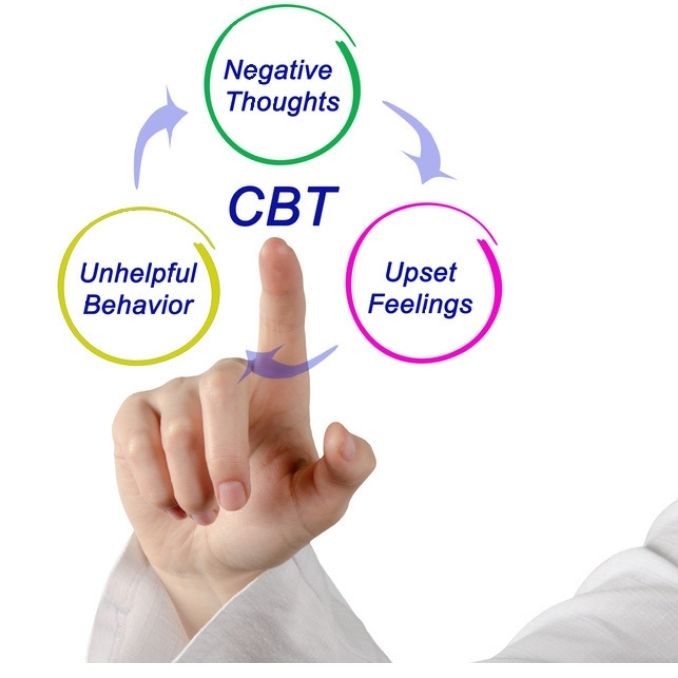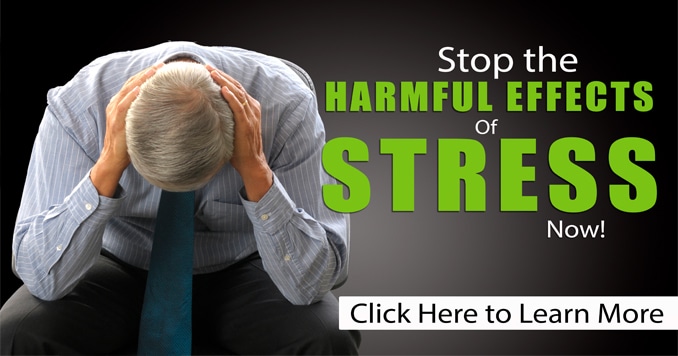Both depression and anxiety are far more common than you think. Everyone feels down or anxious from time to time, but when these feelings become predominant or are overwhelming, there is definitely cause for concern. These negative emotions can start controlling your life, which can often be debilitating.
Sadly, prescription medications are all too often the go-to recommendation made by some Doctors, and all-natural remedies are often overlooked. This is unfortunate because research has shown that the most effective treatment for mild to moderate depression or anxiety is Cognitive Behavioral Therapy (CBT). While medications may mask your symptoms, Cognitive Behavioral Therapy helps you develop the skills and strategies needed to become and stay mentally healthy.
Cognitive Behavioral Therapy is a modality in counseling that is often practiced by a Counselor or Therapist, although many people practice CBT on their own with books for guidance. Essentially, Cognitive Behavioral Therapy is a system for identifying the automatic thoughts you may be having that are contributing to your anxiety or depression. CBT then works to ‘rewire’ your thinking so that you can move forward in life with more constructive and accurate thoughts.
 For example, many people who suffer from anxiety or depression can pinpoint a time when they felt differently and can identify when they started to experience behavioral symptoms. Perhaps there was a bad breakup or some sort of emotional trauma that occurred, and someone said something to make you adopt some sort of negative belief. After that, another event might have taken place that served to reinforce that negative thinking. This can cause a repetitive mantra or ‘tape’ to run repetitively through your head. Our thoughts tend to operate like tapes that run over and over again in our minds, which makes us accept them to be true. We tell ourselves these negative messages on an ongoing basis. Cognitive Behavioral Therapy is a system of deconstructing these negative thoughts.
For example, many people who suffer from anxiety or depression can pinpoint a time when they felt differently and can identify when they started to experience behavioral symptoms. Perhaps there was a bad breakup or some sort of emotional trauma that occurred, and someone said something to make you adopt some sort of negative belief. After that, another event might have taken place that served to reinforce that negative thinking. This can cause a repetitive mantra or ‘tape’ to run repetitively through your head. Our thoughts tend to operate like tapes that run over and over again in our minds, which makes us accept them to be true. We tell ourselves these negative messages on an ongoing basis. Cognitive Behavioral Therapy is a system of deconstructing these negative thoughts.
Cognitive Therapy can be broken down into 3 main goals or components.
1. Identify the Thoughts You Are Having
The first step in CBT is determining what your negative thoughts actually are, especially the ones that cause you to feel down, depressed or anxious. Some thoughts can cause you to feel worthless, helpless, or unlovable. Feelings of unlovability can often lead to depression, whereas feelings of helplessness can frequently cause anxiety. It is sometimes helpful to keep a ‘Thought Journal’ to record the automatic thoughts you are having after specific events. This record is intended to ‘notice without judgment’, helping to recognize patterns of negative thoughts.
For example, perhaps a friend calls you to cancel plans that you had made. What are your first thoughts following that call? If your first thoughts are, ‘They just don’t want to spend time with me. No one ever wants to spend time with me. Why would anyone want to spend time with me?’, this is an automatic negative thought pattern that needs to be addressed.
2. Identify Negative or Inaccurate Thinking
Once you have determined the automatic thoughts you are experiencing, you need to evaluate them. How true are these thoughts? What evidence is there to support that this thought is true? You need to rationally validate your automatic thoughts. Most of the time you will recognize that there isn’t any supporting evidence for these negative thoughts. Rather, they are thoughts that you have simply come to believe are true.
For example, maybe you are driving one day, and a distracted driver cuts you off. Your automatic response might be, ‘Everyone is out to get me today! People are the worst!’. Once you go through this evaluation process, you might ask yourself, ‘Is this actually true?’… ‘Are people really out to get to you?’… ‘Are all people really that bad?’ You now need to determine if the way you are thinking is true. Go through the thought process. Is this actually true? Is everyone really out to get me? Are all people truly that bad?
You need to determine for yourself how true those automatic thoughts are. What is the evidence for this being true? What is the evidence for this being false? It can take time to weed through your thoughts to find evidence for both sides of the argument. You’ll need to look for supporting examples of both statements. Most of the time, you will find that there is little to no supporting evidence for your negative thoughts. It takes time, effort, self-reflection, and honesty to go through this process, but if you are willing to put in the work, the experience can be somewhat liberating. As you do the work, you start to realize from a cognitive level that many negative thoughts simply are not accurate.
3. Reshape Your Negative or Inaccurate Thinking
Once you have the ability to recognize that your negative automatic thoughts are not true, you need to look for ways to change your thinking patterns. For example, perhaps one day you are running late for work. Your natural inclination might be to let your automatic negative thoughts spiral out of control.
“Oh no – my boss will be furious. She will yell at me. I will feel so embarrassed. She will fire me. I’ll never be able to find another job. I won’t be able to pay my bills. What will happen to me?”
Clearly, this negative thought pattern can escalate into a full-blown anxiety attack. Once you are able to determine that there is no evidence to support these negative thoughts, you can begin to reshape your thinking.
“Yes, I may be running late, but this hasn’t happened before. My boss might be displeased, but I can offer to make up the time. It is not the end of the world. It will all work out.”
Cognitive distortions are thoughts that cause individuals to perceive reality inaccurately, which often leads to depression or anxiety. The example above illustrates a common cognitive distortion, referred to as ‘catastrophizing’. Catastrophizing happens when someone automatically assumes that the worst-case scenario will happen. It usually involves believing that you are in a worse situation than you truly are or exaggerating the difficulties you might encounter. It is easy to see how catastrophizing and cognitive distortions can lead to problems. CBT is helpful for identifying what the specific cognitive distortions or cognitive errors are and helps to combat these overwhelming emotions.

If you are suffering from severe anxiety or depression, medication support is usually needed to support your emotional functionality, and you should discuss your concerns with a Doctor or Therapist. If your symptoms are mild to moderate, there are workbooks and self-help books available to help you start the Cognitive Behavioral Therapy process on your own. They primarily contain self-reflection exercises, but can be incredibly helpful for discovering what negative beliefs you currently have and can help you better understand how false these thoughts truly are. Two resources that are often recommended for this are:
Feeling Good: The New Mood Therapy – by Dr. David Burns
Mind Over Mood: Change How You Feel By Changing The Way You Think – by Dennis Greenberger

The hope is that with Cognitive Behavioral Therapy, you will realize that there is a better way to approach certain situations and a more constructive way of thinking that does not contribute to your anxiety or depression. Also note that although CBT is effective, medication might be recommended as an adjunct. Sometimes Cognitive Behavioral Therapy used in conjunction with medication is the most effective treatment, depending on your individual situation. Most of all, if you are suffering from anxiety or depression, don’t be hesitant to talk to someone about how you are feeling. These emotions are more common than you think, and it’s helpful to know that there are safe, natural ways to help you live your best life.
Learn the best ways to eliminate the stress from your life. Click here for more information.








